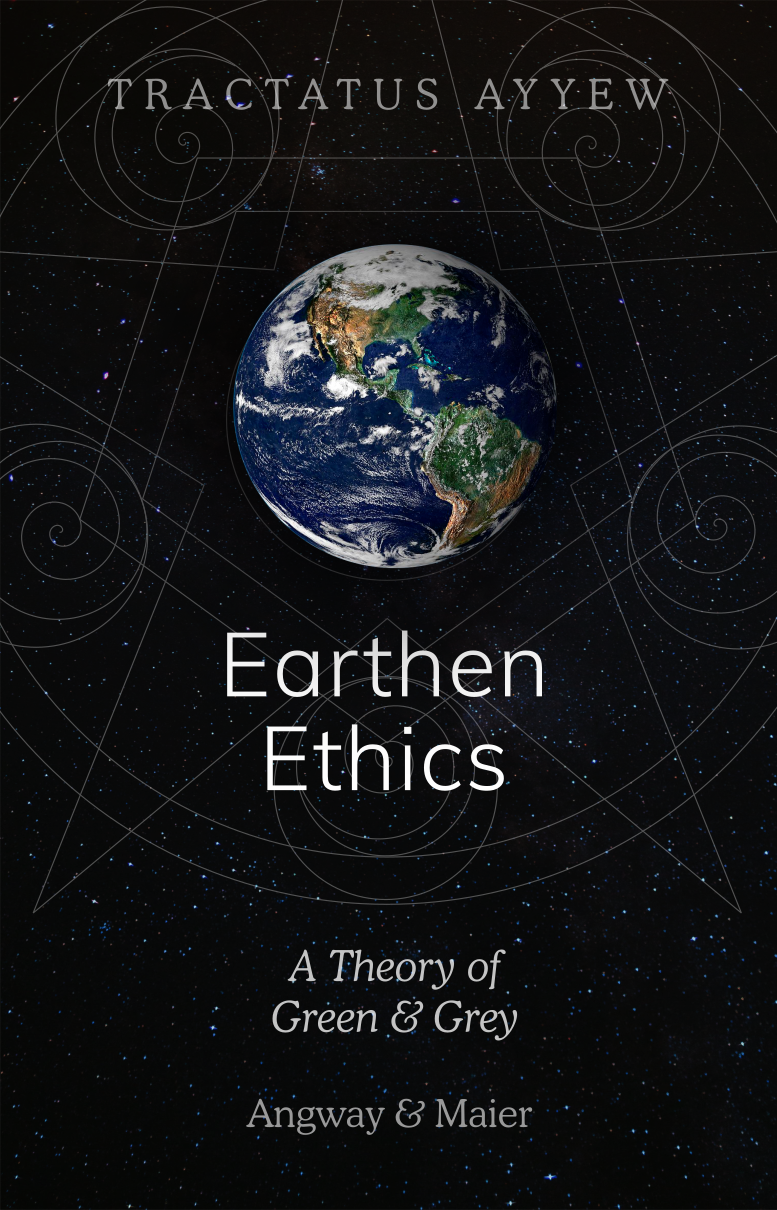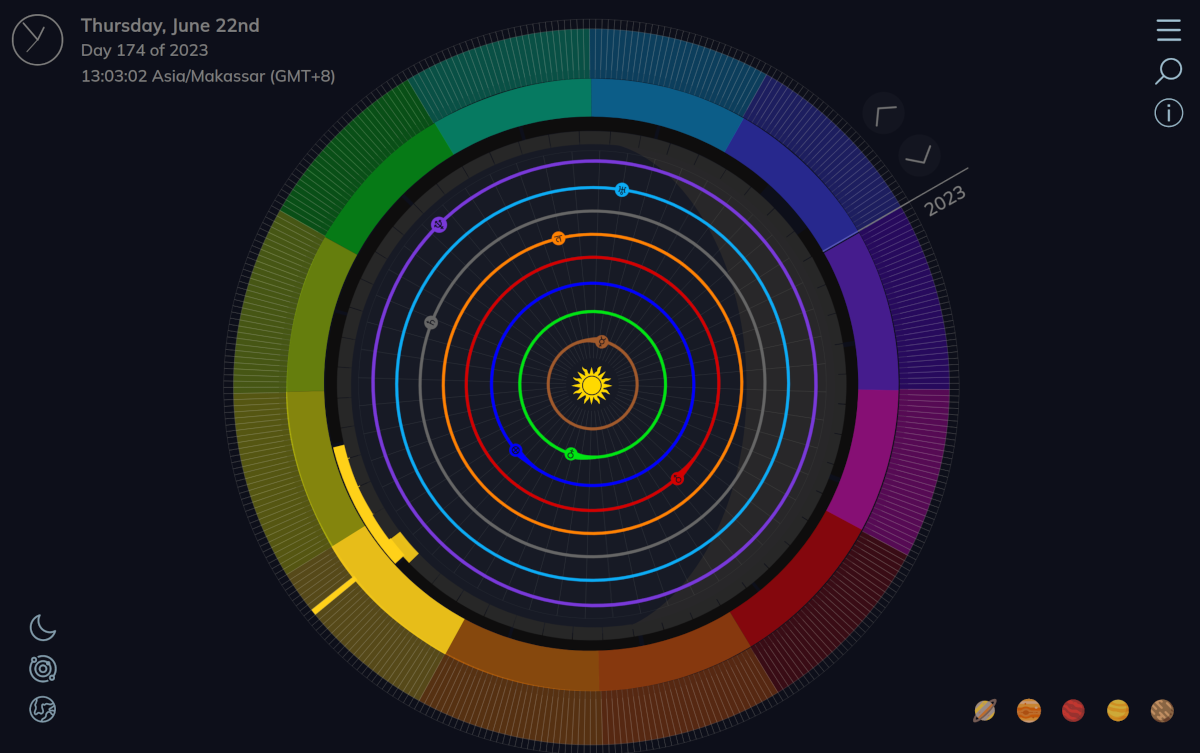The Problem with Google Calendar

Rewind two thousand and sixty-five Earth-orbits around the Sun.
In 45 BC, the Roman calendar was a mess.
Over the preceding centuries, the old Republican calendar had attempted to measure the solar year using just 355 days. Because the true solar year is closer to 365 days, Roman priests were responsible for periodically inserting intercalary days and months to keep the calendar aligned. The system failed spectacularly. By mid-1st century BC, the civic calendar was three months out of sync. Spring festivals were celebrated in summer; autumn rites in winter. Worse still, the additions invariably benefited those already in power: extra days shortened the terms of enemies, extended those of allies, and conveniently delayed inconvenient elections.
In Rome’s far-flung territories, conquered peoples began to abandon the civic calendar altogether. Gauls, Greeks, and Jews gravitated back to their ancestral methods tied to the stars, Moon, and seasons—cycles rooted in the real world rather than the whims of Rome.
Then, in 46 BC, Julius Caesar returned to Rome from campaigns in Egypt. He brought with him new insight into the dynamics of power. In Egypt he had encountered the Egyptian civil calendar: a purely solar system whose regularity far exceeded Rome’s. He also knew the Greeks and Jews followed sophisticated lunisolar calendars. In comparison, he recognized that the Roman calendar was not only an embarrassment—it was a an opportunity.
As Pontifex Maximus, Caesar initiated a reform.
Working with Alexandrian astronomer Sosigenes, he ditched the Moon and refined the Egyptian purely solar model to greater precision. The new calendar, standardized a 365-day year with leap years to correct solar drift. This Julian reform, as it became known, realigned civic time with the seasons and removed priestly control over intercalation.
The new Julian calendar granted Rome an unprecedented soft-power tool: empire-wide temporal unification.
Immersed today in a calendar standardized around the globe, we can scarcely appreciate how revolutionary this was. A single temporal layer dramatically reduced friction across Rome’s multilingual, multiethnic and multi-temporal territories. It became civic infrastructure—like coinage and roads—binding the republic together. Orders could be synchronized; taxes assessed predictably; contracts dated clearly; military movements coordinated across seas on the very same day.
Time became an unprecedented state-coordinated resource.
And a republic became an empire.
Focused almost exclusively on the solar year, the Julian calendar ignored the lunar, solstitial, and Venusian cycles that animated the spiritual traditions of Rome’s colonies. Yet this abstraction was precisely what made it powerful. The imperial calendar compelled participation not by force but by habituation—through the simple, shared experience of time. Over generations, people everywhere began to measure the intricacies of life in Roman months, holidays, and numbers. The empire’s temporal logic—and the ontologies beneath it—disseminated across the ancient world and down through history.
Fast-forward 1,647 Earth-spins.
In 1582, Pope Gregory XIII—the Pontifex of his age—faced a similar calendrical embarrassment.
Spanish conquistadors had returned from the “New World” with stories of sophisticated cultures who tracked time through interwoven astronomical cycles. They reported that the Mayans maintained a calendar more accurate than Christendom’s own. Meanwhile, the Julian calendar had drifted 10–12 days off the solar year. Easter no longer matched the spring equinox and the Church’s calendar was was demonstrably less accurate than that of the heathens in a far off continent.
Gregory recognized the religious and geopolitical threat. If Christendom’s calendar could not track the heavens, how could the Church justify its cosmological authority? And so, he seized the opportunity. Convening scholars, he refined the leap-year system and removed the accumulated 10–12-day misalignment. The Gregorian reform reestablished temporal legitimacy—and thus ecclesiastical power. Once reinstated, it spread swiftly through Europe and, through colonization, across the world.
Once more, time became a tool of empire.
Fast-forward to today.
Around the world the Julian-Gregorian calendar is to this day the de-facto time frame for most of the world.
It is perhaps no surprise that the modern corporations building upon this ancient imperial infrastructure have themselves become empires.
The Gregorian time frame—still bearing its ancient Roman structure, names, and irregularities—is found in every digital calendar we use: Apple Calendar, Outlook, and yes, Google Calendar. Yet these calendar apps are only the visible tip of the temporal iceberg.
Ask any programmer: timekeeping is the deepest dependency in computing. Every email, transaction, social post, database entry, cryptographic signature, and AI interaction is stamped and sorted using Gregorian-derived algorithms. Some systems still use the Julian day count internally because it is even more austere—an uninterrupted tally of days reducible to pure computation.
The global uniformity and mechanical simplicity of Roman time have created ideal conditions for today’s platform giants. The calendar that Google operates upon was engineered for soft power—first to unify Rome, then to organize Christendom, then to rationalize the conquest of the Americas. Its logic continues across the mellenia to enable inexorable centralization. A single temporal grid enables seamless scheduling, logging, and synchronization of billions of devices, actions, and transactions—the infrastructural dream Caesar could only glimpse.
From this vantage, the rise of digital megacorporations looks less like Silicon Valley genius and more like an inevitable continuation of empire through an unbroken temporal foundation. With the majority of the world organized around a single mechanistic calendar, the momentum of history makes it all but inevitable that our days will be integrated into giant platforms that monetize, regulate, and predict our lives.
As social platforms cannibalize our attention and data—subtly guiding behavior toward the consolidation of technofeudal power—it is time to start imagining how different our civilization might be if our temporal foundations had been plural, ecological, or planetary rather than linear, imperial, and anthropocentric.
Like Julius Caesar and Pope Gregory, we face another temporal crisis.
And opportunity.
Never before have we possessed such detailed knowledge of Earth’s rhythms, planetary cycles, and stellar patterns. Contemporary science has illuminated the complexity of seasonal dynamics—from lunar tides to solar cycles, from mass migrations to planetary conjunctions. Meanwhile, relativity has shown that time itself runs differently depending on velocity and gravity. As we establish bases in orbit, on the Moon, and on Mars, these worlds present their own unique days and years—and even their own rates of time. Anthropology, too, has revealed calendrical systems vastly different from our own that were sophisticated, accurate, and ecologically integrated.
Yet our screens show us… boxes.
Rectangles.
Squares.
A digital replica of an ancient linear abstraction.
At its core, the Gregorian calendar assumes a single, universal Earth-based experience of time. Indeed, it was engineered when we still believed the Sun revolved around the Earth. For centuries this assumption went unchallenged because humanity lived within one gravitational well and one solar rhythm. But as our perspective expands—especially as we imagine time happening across multiple worlds—this Earth-centric temporal logic collapses. And once we inhabit more than one orbital or gravitational frame? The illusion of a single planetary time shatters and so does any calendar based on it.
But this assumption of one central planet in the time universe isn't just flawed practically and scientifically. Its contaminated our civilization and its empires.
José Argüelles, a scholar of Mayan timekeeping, argued that calendars program civilizations. Their mathematics, symbols, and rhythms shape how societies think and behave. When a calendar is chaotic and its rhythms are off (Arguelles pointed out all the the illogical quirks and the dischordant frequency of the Gregorian calendar), that civilization will struggle to find harmony. When a culture’s calendar is arbitrary or divorced from Earthen cycles, so too will be its worldview, its empires and its civilization. When a society's calendar has only one central planetary reference, it will put itself in the center of its view of the world. Such a timekeeping system inevitably programs an anthropocentric mindset that puts human values and human needs above local ecological and biospheric cycles.
Consequently, it is little surprise that our civilization and its modern-day corporate empires are devastating the biosphere. As we have seen, the Julian-Gregorain calendar is structurally dissociated from Earthen rhythms: its months drift free from lunar cycles; its years flatten seasonal nuance; its week has no natural anchor at all. Time becomes a grid of obligation rather than a means of harmonizing with life. When our operating system encodes humans—not ecosystems—as the primary reference frame, the planet becomes a resource to be scheduled, extracted, and exhausted.
Argüelles believed we could do far better.
He observed that the very word calendar reveals the Roman concept’s core programing kernel. From Latin kalendae—the day when debts were called in—and calendarium, an accounting ledger, the calendar was never a cosmic map but a bureaucratic tool for tracking obligations. Romans conceived time as linear, mechanical units—months, days, years—rather than living rhythms.
Arguelles also observed that many ancient and ongoing civilizations experienced time differently.
The Greeks oriented parts of their timekeeping to the synodic cycle of Venus, treating its 584-day rhythm as divine revelation. The Chinese lunisolar system anchored the year both to the Moon’s 29.5-day cycle and the Sun’s seasonal path. Countless Indigenous cultures oriented ceremony and subsistence not by abstract months but by ecological cues: berry ripening, salmon return, monsoons. Druids and Javanese communities synchronized ritual with solstices, equinoxes, and heliacal risings. The Maya integrated multiple overlapping cycles—the 260-day Tzolk’in, the Haab’, and the Long Count nested within the ~26,000-year precession cycle aligning the solstice Sun with the Milky Way’s dark rift.
These were not “calendars” in the Roman sense—tools of administration and debt-tracking—but synchronometers: instruments for aligning human activity with the living cycles of Earth and sky.
Today, the transition from a linear Roman conception of time to a cyclical, synchronistic one has never been more urgent.
My colleague Banayan and I argue in Tractatus Ayyew that cultures grounded in cyclical temporality—organizing around seasonal, lunar, and ecological rhythms—tend to enrich the ecosystems they inhabit. Such cyclocentric cultures provide luminous examples of a path forward precisely because they centered relationship with the Earthen cycles around them. They avoided the extractive linear paradigm that defines our modern era and instead systematically contributed to the vitality and abundance of the biosphere.
Argüelles deeply understand the urgency of calendar reform and devoted his life to the task. After World War II, the Universal Calendar Reform movement garnered global support for a new fixed 13-month year. The initiative nearly passed in 1956 but was vetoed by the United States under pressure from Christian and Jewish groups. Building on this, Argüelles later proposed his own 13-moon system, inspired partly by Mayan cycles. With poetic names like Red Wizard and Blue Dragon, it found a following in counter-cultural and New Age circles, but never achieved broad adoption.
Still, the need remains.
As the Gregorian calendar fails to accommodate multi-planetary life and relativistic physics, some self-appointed Pontificus Maximus of our age will move to consolidate power and reassert their model of time.
Unless we do so first.
This time, we have the tools and the window for a collective coming together of resonant humanity from the bottom up, rather than the top down.
If Argüelles was right, the solution is not merely adopting a new calendar but shifting into a deeper relationship with Earth’s cycles. We can begin now as individuals by becoming cognizant of the subliminal temporal tendencies inherent in calendar. Then, as groups and communities we can re-boot and re-root our temporal consciousness in place; tracking the Moon; honoring solstices; celebrating migrations; syncing with our solar system..
We can let our timekeeping spiral with life rather than confine it.
In time, a new system will emerge—
or better yet, many deeply localized systems—
harmonized with the immutable cycles of the solar system and rooted in the resonant rhythms of our common home.
Thanks for reading. That was a long one! For more on the ethico-ontology behind this essay see the work of my colleague and I developing the theory of Earthen ethics and the concept of cyclocentric culture.

In the meantime...
While we're waiting for new grass-roots developed, decentralized calendar system that is endorsed by the UN and all the worlds religions (Arguelles:"its not just possible its a necessity"), my team and I have developed EarthCal as a way to synk my to-dos, events and anniversaries with Earthen cycles. Its a website app anyone can use with tools to import your old Apple, Outlook and Google calendars you can say bye bye to Rome!

An Earthen project...



